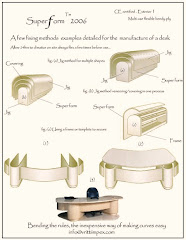



Well we suspect not,they go back to Chaucers time (who?) he will have a Garmin twelve channel GPS and plotter as a minimum I would think,so whats an Astrolabe? here we go.
The astrolabe
The astrolabe (from Greek astrolabon, 'star-catcher') was by far the most efficient astronomical instrument used during the Middle Ages. This small (usually half a dozen inches in diameter) disk-like object was a form of a mechanical map of the celestial sphere adjustable to the observer's position on the Earth and a particular date. It enabled even an amateur astronomer to make plenty of otherwise complicated astronomical calculations quickly.
There were three basic kinds of the instrument: one-, two- and three-dimensional, ie. linear, planispheric and spherical respectively (Reidy 1987: 1093). The commonest one and the one described by Chaucer was a planispheric astrolabe, which depicted the stereographic projection of the sky on the equator.
The instrument was so versatile in its applications that it is sometimes refered to as a form of an early analogue computer. According to Morrison (2004; the source quoted below), a 10th-century Arabian scholar, Abdal-Rahmân b. Umar al-Sufî, described in his work on the astrolabe as many as 1000 of its uses. The flexibility of the instrument was rather overestimated by that author but nevertheless the possibilities of making use of it were very numerous. Most typically, it was employed to indicate the positions of celestial bodies relative to the horizon and to the meridian, to tell time, to measure the length of the day or season or to determine the directions of the world. It was possible to calculate the heights of buildings or mountains or the distance between two objects with the help of an astrolabe. Its simplified version served seamen as a navigation tool.
In A Treatise on the Astrolabe Chaucer explains in detail how the astrolabe can be used, for instance,:
To fynde the degre in which the sonne is day by day, after his cours aboute.
To knowe the altitude of the sonne or of othre celestial bodies.
To knowe every tyme of the day by light of the sonne; and every tyme of the nyght by the sterres fixe; and eke to knowe by nyght or by day the degre of eny signe that ascendith on the est orisonte, which that is clepid comounly the ascendent, or ellis horoscopum.
To knowe which day is lik to which day as of lengthe.
To knowe the degrees of longitudes of fixe sterres after that they be determynat in thin Astrelabye, yf so be that thei be trewly sette.
To knowe with which degre of the zodiak eny sterre fix in thin Astrelabie arisith upon the est orisonte, all though his dwellyng be in another signe.
To knowe the declinacioun of eny degre in the zodiak fro the equinoxiall cercle.
To prove evidently the latitude of eny place in a regioun by the preve of the height of the pool artik in that same place.
To knowe justly the 4 quarters of the world, as Est, West, North, and South.
Although the hayday of the astrolabe were later Middle Ages, its history can be traced as far back as to the times of Hipparch of Nicaea (ca. 190-125 BC), who advanced the theory of the stereographic projection and thus laid strong foundations for the development of the instrument (Morrison 2004). The machine which is said to have been the precursor of the device was probably known already to Ptolemy. It was developed and refined by the scholars of the Middle East from where it was introduced into Europe in the 11th century.
An interesting and much more detailed description of the astrolabe, its history, principles of its working, uses, etc., supplemented with pictures, is available on the excellent websites:
http://astrolabes.org/ by James E. Morrison
http://www.math.ubc.ca/~cass/courses/m309-01a/montero/math309project.html by Laura Jamieson and Maria Montero
Thus, I see no need to repeat it here.




No comments:
Post a Comment